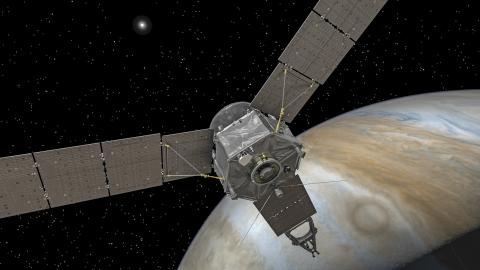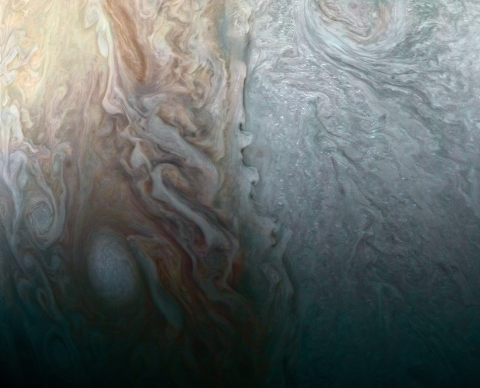The Juno Science Team, which includes Georgia Tech Professor Paul Steffes, has published its first observations of Jupiter. In a paper that now appears in the journal Science, the researchers describe a chaotic scene of ammonia, cyclones, and bands of storms that extend far deeper beneath the planet’s clouds than previously thought.
The Juno Science Team, which includes Georgia Tech Professor Paul Steffes, has published its first observations of Jupiter. In a paper that now appears in the journal Science, the researchers describe a chaotic scene of ammonia, cyclones and bands of storms that extend far deeper beneath the planet’s clouds than previously thought.
Juno has been circling Jupiter since entering its orbit on July 4, 2016, and has completed six passes of the planet so far. The paper outlines findings from Juno’s first pole-to-pole orbit on August 27, when the basketball court-sized spacecraft skimmed within nearly 2,000 miles of Jupiter’s equatorial cloud tops.
Read the full story.
Additional Images

